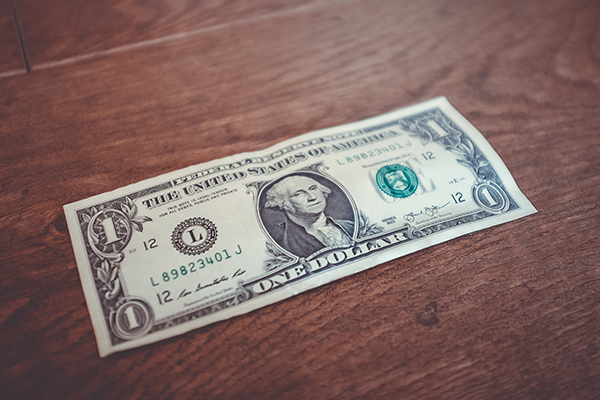Today I will be discussing a current problem relating to my major, the graphic design field. If you are an individual that creates 2D and 3D products to put out into the world, you would likely have experienced this. The wicked problem is developing creative burnout as a designer.
Burnout, defined by Business Dictionary is: “Feeling of physical and emotional exhaustion, due to stress from working with people under difficult or demanding conditions. Burnout is followed by signs such as chronic fatigue, quickness to anger and suspicion, and susceptibility to colds, headaches, and fevers.” (BusinessDictionary).
Unlike other documents and articles that discuss how to treat burnout and how to avoid it, I would like to turn it back at the causes at hand. Instead of discussing how to treat burnout, I would like to discuss how burnout can be avoided altogether with better conditions from school/places of work and more realistic expectations from designers.
The problem designers face with burnout has been a reoccurring issue ever since creating 2D and 3D products came to be. The problem is more often seen from designers working for large-scale companies and students. This is due to having deadlines pile up on each other with no end in sight and having unrealistic expectations placed on these said individuals, the stress can become overbearing.
Imagine you are working at a graphic design studio for big cooperation like 3M. Met with deadlines left and right, expected to create your best work every single time with a little number of mistakes. The pressure to always create your best, while trying to juggle deadlines left and right starts to become too much for you. You start to get filled with doubt (UCreative) that you are starting to lose your fire and steam. Working on projects isn’t like how it used to be. You are starting to struggle more and more as stress takes its hold on you.
Before you know it you are faced with burnout. Where you can’t create designs like you used to, employers and clients start to become upset at you that you can’t create anymore. Or when you do finally finish a design it’s not up to their expectations. Sadness starts to set in as you try to look up online how to get over burnout. But in this memo, I want to discuss the cause of the stressors. The ones that hired the employees, the bosses.
The ones putting on the expectations and deadlines, to begin with. A designer needs open space to work, not an environment filled with stress. Because it does impact how they create. I would like to propose the expectations and deadlines be lessened so burnout causes don’t happen as frequently. Because the way we have been going about doing it and putting blame on the designers themselves to solve it needs to change.
To get the idea of how devastating creative burnout is, a designer by the name of Nathalie Sejean discussing it in an article. She is a designer that has been recovering from burnout for “124 weeks now”. She discusses the biggest misconception about creativity and the lessons she learned from her experience. A line from this article that struck me was: “I felt embarrassed to admit that I didn’t feel creative anymore.” (Sejean).
Creative burnout is seen as a weakness currently, not being able to do your job and make a product. When the issue should be turned at the party causing the burnout to begin with. Designers are often faced with a burnout at least once in their career and the way people are currently addressing burnout doesn’t seem to be creating a lasting effect. Burnout is very much different for everyone and more different on how to get “over it”.
Attention should be focused back on the causes of this issue. The current situation is not currently working, when designers are faced with burnout, they are faced with shame and feelings of guilt that they aren’t able to “create” anymore. When burnout is only natural, and it should be treated as such. When designers look up how to get over burnout, they are met with thousands upon thousands of articles on how to “get over it”. All with different advice, when none of the said advice even works for everyone.
Someone that I will be interviewing is a past student at Albright College in Reading named Darren Gilbert. A full-time student at this university, that was met with endless deadlines and products to create. Majoring in digital studio arts (a combined media of digital media and studio art), experiencing creative burnout during the final year of college. Some potential questions I would like to discuss would include but not limited to: When did you experience burnout, do you know what caused it, how did you get over it?
Firstly, I first asked questions retaining to his burnout. Firstly I asked when he realized he was experiencing burnout. Starting in his senior year of college, a third-of-the-way into his last semester. Secondly, I asked him what caused it. He stated: “I was taking five classes to graduate on time. It wouldn’t have been much of a problem if I hadn’t chosen two very extensive projects for two of my classes.
For one class I had to make my own mini-comic filled with original characters I had to design. Plus I had to write and illustrate the comic completely by myself. In another class, I chose to do a full fledge frame-by-frame animation with fights, voice acting, sound effects, and music. Plus during this time I was involved with clubs and sports as well as working in the campus library.” Students are often stretched too thin and the expectations are set to a high standard. Students often putting too much burden on themselves to try and stand out from the crowd. As their mental health often suffers for it.
Lastly, I asked how he was able to get over his burnout, this is what he said: “I never got over it. I spread myself too thin that semester. I was miserable for the majority of the semester. I was pulling all-nighters for projects that I had lost my passion for long ago. I never had a single cup of coffee in my life until my final semester for my senior year, because of these projects. It was a shame cause when I started out I loved working on the projects, but the all-nighters and rushing to meet deadlines ruined it for me.
I was not happy with my final projects at all, I had to cut corners and remove some of my favorite ideas just to meet the deadlines. I felt like my art near the end wasn’t the best it could be either. Any art that I did for myself seemed lackluster, and I didn’t start to draw again until weeks after graduation.” Darren brings up amazing points about how burnout affects designers. Bringing up the loss of love for projects with burnout starts to occur, never being proud of the end result, and how it impacts your mental state.
When a designer’s job is to create designs, companies and schools should take more care of this. When a designer is greeted with burnout, it is extremely hard to get out of. This designer wasn’t able to get out of it at all until he left college. If he was in his first year and experienced these effects, the damage could have been devastating.
My project plan would begin by conducting broad research. Seeing the current articles currently available at disposal and seeing the point of view currently conducted. When I observed the view on how the blame of creative burnout was directed onto the designers themselves, I wanted to make an essay instead focusing on the causes at the companies themselves.
And how to avoid burnout all together, instead of learning how to “get over it” when it has already occurred. My research methodology consists of conducting an interview with a past university student (Darren Gilbert) as well as trying to find resources that do not talk about how to “get over” burnout. But rather articles that talk about individuals’ experience with burnout and how it affected them. And also experiences with how burnout could have been handled better before it began. When gathering this information, I will then be conducting the draft. Going back and forth with peers to form my final draft.
The benefits of this project will be to address burnout in a more constructive way. Instead of addressing the problem when it comes, it should be addressed before it even begins. I believe if designers did not experience creative burnout, their designs could only grow as they progress. Taking pride in their work as they continue to create for companies and for their school. I believe if this problem is addressed at the source it will provide a lot more insight on why burnout happens and how to hit it at the source.
| 10/15/19 | Research on project proposal/what topic to use. Investigate what sources/articles to use. |
| 10/22/19 | Formulate the first draft of the paper, interview Darren Gilbert (former college design student). |
| 10/25/19 | Edit draft after feedback, formulate final draft, and turn in. |
Shown above is the project timeline. Dates on how the formation of the paper will take place and what will happen on each date.
In conclusion, why should this topic of discussion matter? Why should people care? People should care because burnout can affect everyone, not just the designers suffering from it. It can affect you if you are a designer if you are the company employing the design by having a designer that can no longer create and/or create like they used to, and even the clients/teachers receiving the designs.
They will be met with a design the designer is not proud of or a design that isn’t their best work. Having a happy, productive, and creative designer is better than a burnout one. And addressing the problem at the source at how to fix it will be a better solution than a designer that is met with guilt and never being able to leave that creative burnout space.
Response: I can feel your passion for burnout and the topic is indeed quite interesting. It is a good way of writing by explaining the concepts of burnout at first as for most of the readers, it is a new idea. In addition, some articles are cited to give background information on the topic. But I think the transition of the article and citation format could be improved and standard. Also, the research method part lacks some key information about research methods. Maybe a subhead can be used. In addition, the language style may be a little informal for a topic proposal.
Appendix
Sejean, N. (2015, December 11). What Being in a Devastating Creative Burnout Taught Me. Retrieved October 22, 2019, from https://www.creativelive.com/blog/creative-burnout- lessons/.
An article that addresses how devastating burnout can leave a designer. What happens when burnout occurs and the lessons learned from said burnout. People often discuss how devastating it is to get burnout. But they only ever talked about what to do to overcome it. Never about how it affects the designer and the lasting damage it has on themselves as a designer and themselves as a person, this article talks about it.
Bulhain, J. (2018, December 21). 7 Stages of Creative Burnout. Retrieved October 22, 2019, from https://www.ucreative.com/articles/creative-burnout-sucks/.
An article that talks about the stages of creative burnout. Signs to look for when experiencing it before, during, and after. The only thing about this article I don’t agree with is that these stages can come at different times and not in this order. But I included it in this memo because it discusses the before and after effects of said burnout.
What is burn-out? definition and meaning. (n.d.). Retrieved October 22, 2019, from http://www.businessdictionary.com/definition/burn-out.html.
The official definition of what burnout is and how it relates back to a creative burnout, not just a physical.
Gilbert, D. (n.d.). Final Project Video – Darren Gilbert. Retrieved October 22, 2019, from https://drive.google.com/file/d/1OJtSgYHOMY1_25pmmbvNa2b6zsuHes5E/view.
Campbell-Dollaghan, K. (2018, July 12). Creative burnout is inevitable. Here are 10 ways to beat it. Retrieved October 24, 2019, from https://www.fastcompany.com/90200879/creative- burnout-is-inevitable-heres-how-to-beat-it.
Hahn, M. (2019, September 18). Creative Burnout: How 11 Artists Take Care of Their Craft. Retrieved October 24, 2019, from https://blog.landr.com/avoiding-creative-burnout/.
Hervey, J. C. (2019, February 25). How To Tell If You Are Creatively Burnt Out. Retrieved October 24, 2019, from https://www.forbes.com/sites/janeclairehervey/2019/02/24/how- to-tell-if-you-are-creatively-burnt-out/#225e0faa5b6b.








Leave A Comment